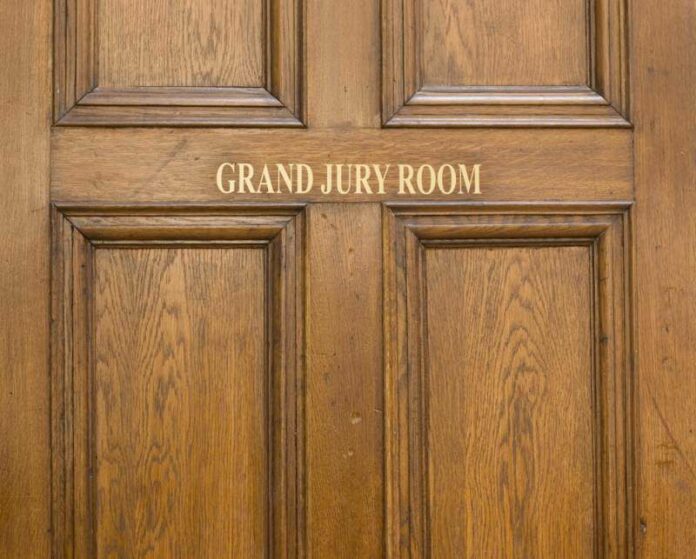The Sonoma County Civil Grand Jury tackled several big issues this year, including health treatment in the county jail, protecting local water systems against earthquakes, problems with the county’s mental health budget and the chronic neglect of county-owned properties. Last week, we looked at the report on health care in the county jail. This week, we’ll briefly review the other topics.
Mixed news on the local water system’s vulnerability to earthquakes
The Grand Jury looked at the vulnerability of Sonoma Water to disruption due to earthquakes. Sonoma Water delivers water from wells along the Russian River to nine cities and special districts, including Santa Rosa and Windsor.
The report looks at the water district’s extensively developed emergency plans, assesses their progress and suggests improvements.
The Grand Jury’s main critique was that the Water District’s prediction that water service could be restored within three days is too optimistic. The report suggests that two weeks to six months without
reliable water service is a more realistic estimate in the aftermath of a major earthquake.
To mitigate this, the report suggests greater cooperation and emergency practice between Sonoma Water and its subcontractors, as well as improving Sonoma Water’s inventory of repair parts. The report also suggests that Sonoma Water alert consumers that, for emergency preparedness purposes, they should store at least two weeks of water, and not just two days as is currently suggested.
Problems with the county’s behavioral health budget
Responding to citizen complaints, the Grand Jury examined problems with the county’s Behavioral Health Division’s (BHD) budget.
Behavioral health delivers mental health and substance abuse services to children and adults in Sonoma County.
For the last several years, according to the report, the BHD has been operating with large budget shortfalls in the millions of dollars, and the Grand Jury tasked itself with finding out why.
In 2014-15, the budget deficit was $8 million; in 2015-16, $5 million; in 2016-17, $11 million. In earlier years, the shortfall was mitigated by revenue from fund balances, but in 2017-18, the budget deficit was $10 million, and fund balances were insufficient to meet revenue shortfalls. Current estimates for 2019-20 indicate an $8.5 million shortfall.
The Grand Jury enumerated several causes, including the following:
• hopeful but inaccurate budget forecasting
• failure to provide feedback mechanisms to correct widening budget gaps
• the lack of appropriately-trained personnel
• the delay in implementation of a new medical record, billing and claiming system (Avatar)
• critical failures in compliance oversight
• leadership’s failure to understand complex, government finance systems
The Grand Jury report was unstinting in its criticism:
“Leadership’s lack of knowledge and understanding of government finance systems contributed to inaccurate forecasts of revenues and expenditures. Significant turnover in … employees in key positions, without replacing them with persons with equivalent knowledge, experience and training, contributed to lack of understanding of vital budget and accounting processes. Section and program managers were excluded from budget development, contributing to inaccurate projections of service needs. This exclusion also led to the inability to control program expenditures. Professional communication was stifled by a culture of retribution and neglect, which impacted the free flow of information. This led to an egregious lack of transparency.”
According to the report, “The Civil Grand Jury consistently and repeatedly requested fiscal policies and procedures within BHD. None were forthcoming.”
Managing Public Properties in Sonoma County
Sonoma County owns over 90 buildings on 500 acres, most of which are located in three campuses: the County Administrative Center off Hwy. 101, the Chanate Medical Complex in the hills east of there and Los Guilicos at the north end of Sonoma Valley. Most of the buildings were built before 1970, and the estimated worth of these properties is around $2 billion.
According to the report, “At all three campuses, routine preventative maintenance and repairs have been neglected — either unfunded or underfunded due to budgetary constraints — with the result that physical deterioration is evident.”
“Building maintenance in Sonoma County was kept up fairly well until the 2008 recession and then was significantly deferred,” the report states. “Deferred maintenance has not recovered since then. Ongoing maintenance is underfunded. There is little funding for demolition; unused properties are largely abandoned in place.”
Deferred maintenance has a dramatic effect on the value of property, the report points out. “The Chanate property in 2016 was appraised unimproved at $7 million and estimated improved at $275.5 million.”
The Board of Supervisors established a deferred maintenance fund a year ago, but according to the report, “funding has been inconsistent, and the fund has been used to cover other program costs.”
The county has explored public/private partnerships to repair existing buildings or fund new ones, but no such efforts were identified in the report.
The Grand Jury recommendations offer no magic bullet solutions and are primarily procedural, suggesting better record keeping (via an existing county computer program) and better reporting. It also recommends that repairs for deferred maintenance that actually endanger employee’s health and safety be given immediate attention.
Find the complete grand jury reports here.
46.5
F
Healdsburg
April 19, 2025








